



The Datsun 240Z first hit the American shores halfway through 1969 and found a national market eagerly waiting for an inexpensive sports car that provided creature comforts beyond the minima, a solid roof and doors, agile handling, and a powerful, dependable engine. It was instantly successful.
The reason for the Z's popularity continues to be discussed, but the probable cause was in the aggregate of the Z's features. The 240 was greater than the sum of its parts. The Z's styling was taut and aggressive, combining both angular and flowing elements. It's empty weight was under 2400 pounds, which allowed the 150 horsepower of the single overhead cam engine to provide performance rivalling heavier contemporaries equipped with V-8's. A smooth four speed gearbox was standard, and an automatic was optional. Despite the short 90 inch wheelbase, drivers and passengers well over 6 feet in height found the cockpit comfortable. The dash was modern while retaining the sports car heritage of full instrumentation. Even the heater and defroster were signifiant steps ahead of other sports cars in the same price range.
Under its skin, the 240 featured a Macpherson strut suspension at all four wheel which, while not exotic, was light and inexpensive to manufacture, and provided the benefits of an independent rear suspension. Steering was rack and pinion with a relatively quick ratio, a highly valued sports car trait that was still somewhat unusual as the 60's drew to a close. Disc brakes were standard up front, and drums were fitted to the rear wheels.
The 240Z was produced from 1969 until 1973 with only minor changes. Renamed the 260Z in 1974, the new model had some significant changes from the 240. The engine stroke was increased due to the demands of tougher emissions laws, which had already caused a change in '73 to flat-topped Hitachi carburetors from the '72's round topped SU's. Carburetors were still used on the 260, but emissions regulations would make this the last year for the Hitachi's. The 260 also gained weight as a result of more stringent bumper requirements. Early 260's shared the 240 body with minimal changes, but late 260's used the strengthened and heavier 280 body, even though the chassis change was not publically acknowledged until the introduction of the 1975 fuel injected 280Z.
The introduction of the 280Z marked a shift toward luxury and sophistication, and the end of the "early" Z's. Increased overall complexty, a bore/stroke ratio that was not as inclined to rev as the 240, and three hundred odd pounds of additional weight made the 280 a much different car than the 240.
The 240Z was a competitive entry car in SCCA racing events of the '70's, though most racing efforts were made without major backing from Datsun. Significant factory backing from Datsun (soon to be Nissan) would come, but not during the life of the 240. Today the 240Z continues to be campaigned in Solo I and Solo II events, and is still considered to be competitive at the regional level, nearly twenty-five years after it's introduction.


